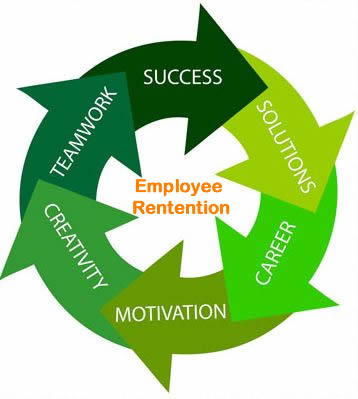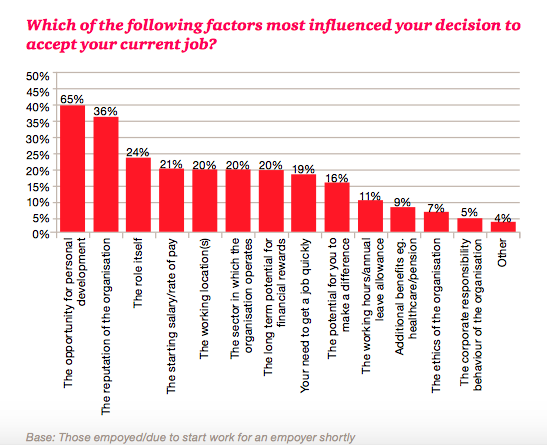Hiring and training employees is expensive, but losing top employees is even more costly. So costly, that 78% of business leaders rank employee retention as “urgent” and 73% of organizations have revamped employee onboarding to combat bleak employee retention rates. To reduce employee turnover and increase employee retention, the focus should be on ways to increase employee engagement – the driver of a happy, enthusiastic, and passionate workforce.

How do you increase employee engagement? There is no magic solution to increase employee engagement and retention. However, statistics show that organizations across industries can implement a few key managerial adjustments to drive employee happiness and in return reduce employee turnover rates.
 Source: aboutleaders.com
Source: aboutleaders.com
1) Offer Non-Traditional Rewards for Great Performance
Beyond monetary compensation, seek to motivate your best employees by offering non-traditional rewards such as remote working options and flexible hours. In a market where 33% of new hires quit after six months and 33% of management executives at SMBs are secretly browsing new opportunities, standard rewards are not enough.
Recent studies found that remote workers are 50% less likely to quit. Additionally, the majority of millennials value personal development and flexible working hours over cash incentives.
Create an open dialogue where you can find out what exactly your employees prefer and work to accommodate them if possible. This act of listening and adjusting is critical to reduce employee turnover rates and increase employee engagement.
2) Modernize the Feedback Process
Annual performance reviews should be modified or completely eliminated for most innovative companies. Studies have shown that 79% of the modern workforce expect immediate feedback and 41% of younger workers prefer digital communication over face to face.
By delaying the feedback process to once a year, employees do not have an opportunity to solve problematic issues early. Many even feel guilty for bringing unprovoked issues up.
One solution is gamifying the feedback process. Create a fun and two-way communication cycle to promote positive feedback for hitting key milestones. Survey what could be modified to help managers optimize everything from sales trainings and product launches.
3) Present Opportunities for Personal Development
According to Gallup’s extensive research into millennials in the modern workplace, the most important factor when accepting a new job was the chance for personal development.

Source: http://www.pwc.com
Personal development ironically is heavily influenced by the company, with 91% of workers reporting feeling motivated with leadership support. Employees should be properly on-boarded, trained, and ideally mentored throughout their early months to ensure integration into the company culture and team.
To prevent boredom (as explained in #4), consider using training engagement apps such as a trivia game to train and on-board employees in an interactive and collaborative way. This training process can also be utilized to train veteran employees seeking further development. This process of growth will inevitably increase employee engagement and help retention rates.
4) Kill Routine and Workplace Boredom
A 2015 survey found that nearly half of all Americans are bored in their current jobs. This boredom stems from a variety of issues including routine tasks and feeling completely disconnected from the company.
In fact, Gallup recently found that 87% of workers globally are not engaged and only 30% of all millennial workers are engaged. These statistics are staggering, especially considering the effects on company-wide employee morale when the majority of workers are “out of it”.
Rather than divide and routinize roles, consider offering frequent opportunities for employees to experience new challenges, including temporary leadership positions to help drive personal motivation and increase employee engagement. Utilize a proactive rather than reactive approach to management to help reduce employee turnover.
5) Utilize Technology to Drive Collaboration and Purpose
To increase employee engagement, consider utilizing technology and apps to drive inner-workplace engagement. Adobe found that 85% of employees who feel that their company’s technology is ahead of the curve, say they love their jobs.
Collaboration and a greater sense of purpose are key motivating factors and sources of engagement. 74% of Gen Z workers said work should have a greater purpose than a salary.
By utilizing technology, you can free office hours for external events, create friendly competitions to encourage knowledge sharing, and open a communication line for management to speak directly to employees on the vision and progress of the company.






-1.jpg)
.jpg)

